Everyone visiting Iceland sees part of the Reykjanes (pronounced Reyk-ee-ness) Peninsula, as this is where the Keflavík International Airport is located. You will also find Iceland’s most popular tourist attraction, the Blue Lagoon, on the Reykjanes Peninsula. Yet there is so much more to see that most visitors miss. It is very easy to include a day trip or include the Reykjanes Peninsula on your Iceland itinerary.
Sadly, the Reykjanes Peninsula is often overlooked by visitors touring the Golden Circle or the South Coast. Don’t make that mistake! If you are wondering if visiting the Reykjanes Peninsula is worth it, I’ll tell you absolutely yes! There is plenty to see and do on the Reykjanes Peninsula and its proximity to the international airport and capital city of Reykjavik really make it a must-visit destination.
In this post I will tell you why to visit the Reykjanes Peninsula, the best things to do on the Reykjanes Peninsula (with a map of those destinations), and how to organize a one-day itinerary for visiting the Reykjanes Peninsula.
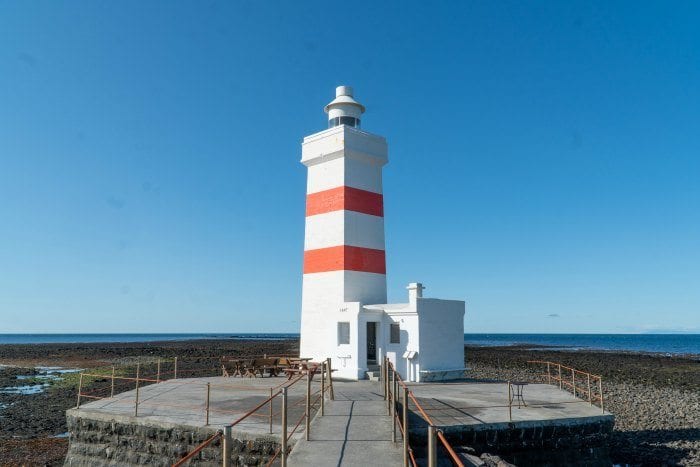
Why Visit the REykjanes Peninsula
Reykjanes means “steamy” and this volcanic area on the southwesternmost tip of Iceland features plenty of geothermal fields, ancient craters, and fissures that make it live up to its name. The Reykjanes Peninsula is also home to the Geldingadalur Volcano, the site of Iceland’s most recent volcanic eruptions.
The Reykjanes UNESCO Global Geopark covers the Reykjanes Peninsula, where the Mid-Atlantic Ridge rises above sea level and you can see the boundary between the tectonic plates. Its barren landscape has been compared to the moon and was used as a military base for the U.S. until recently.
On the Reykjanes Peninsula, you will be able to take in the view from the top of a lighthouse, visit beaches, walk across the bridge between two continents, and see powerful steam vents and geothermal hot pots. You can also see the newest land formations in Iceland at the Geldingadalur volcano lava fields.
If you prefer man-made attractions, of course, there is the famous Blue Lagoon, as well as the Viking Museum, and the Icelandic Museum of Rock and Roll. Read on for a full list of things to do on the Reykjanes Peninsula with a one-day (or more) itinerary, complete with a map and tips.
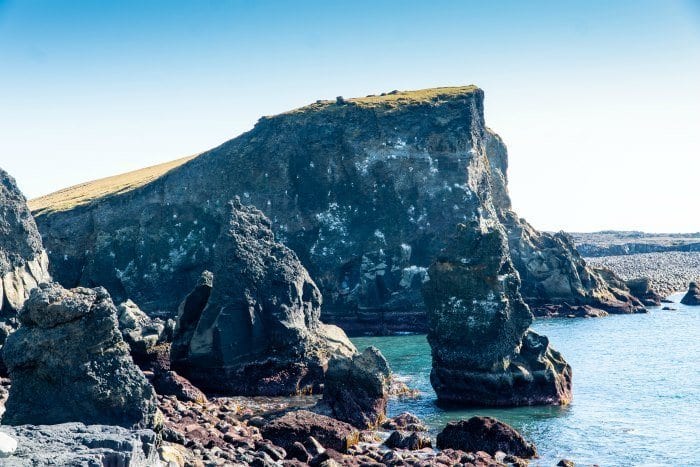
Getting to the Reykjanes Peninsula
Note: This post may contain affiliate links. If you click a link and make a purchase, I may receive a small commission. All opinions are my own.
It is easy to add a day trip to the Reykjanes Peninsula to a trip to Reykjavik or the South Coast of Iceland. You will need a full day to fit in everything on this itinerary, possibly even extending it to two days depending on how much time you want to spend at the Blue Lagoon or the lava fields.
Or, you could split this up into two days for your arrival day and departure day. When you arrive, hit the Blue Lagoon and then see a few more of the sights. Then on your departure day see if you can visit the Lava Tunnel and another sight, depending on when you flight departs.
Most arriving flights land early in the morning and you need to kill time anyway before checking into your hotel or Airbnb. Also, most departing flights to the U.S. leave in the late afternoon so you can fit in a visit and finish at the airport.
If you are renting a car at the airport for your visit to Iceland, it is easy enough to explore the Reykjanes Peninsula. However, if you are basing yourself out of Reykjavik without a car, you will need to sign up for a tour.
If you would prefer a guided, private tour, I highly recommend my partner Hidden Iceland. Hidden Iceland offers fully customized itineraries and expert guides and by mentioning WE3TRAVEL when you contact them, they have graciously offered our community preferential treatment and some additional perks while on tour.
I’ve done a bit of both. The first time I visited the Reykjanes Peninsula it was part of a small group tour that included sites in Reykjavik and a drop-off at the airport. However, because of others’ earlier drop-off times at KEF airport, I didn’t get to see everything. So when I returned to Iceland to explore Snaefellsnes and the West Fjords, I decided I wanted to see what I missed in Reykjanes as well. Plus it was nice to visit this area when it wasn’t snow-covered this time around!
This time I took a private three-to-four-hour tour of the Reykjanes Peninsula. I had stayed overnight in Reykjavik on my last night and needed to arrange for a FlyBus or transfer to the airport anyway so I filled my downtime with seeing a little bit more of Iceland before flying home.
Best Things to do on the Reykjanes Peninsula
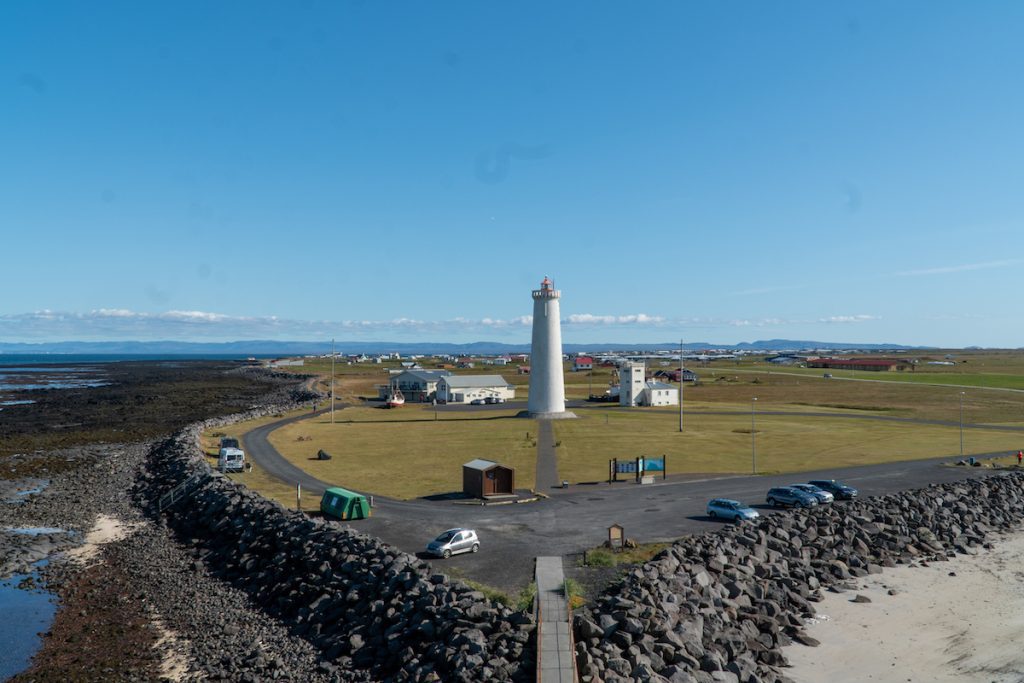
Here are the top sights and attractions on the Reykjanes Peninsula. I’m listing these in the order that you would visit each attraction if you were planning a one-day Reykjanes Peninsula itinerary from Reykjavik. This would start at the Raufarhólshellir Lava Tunnel on the way to Reykjanes and finish with a relaxing soak at the Blue Lagoon. Obviously this could be reordered depending on what you most want to visit and any time constraints.
Keep in mind that the volcano on Reykjanes Peninsula has been fairly active in recent years. While the volcano isn’t actively erupting at the time of this writing, this is always subject to change so I would encourage you to visit the Safe Travel website before you embark to check danger levels due to gases, weather, landslides, or falling rocks, etc. and areas that may be closed.
Raufarhólshellir Lava Tunnel
The Raufarhólshellir Lava Tunnel is one of the longest and best in Iceland, plus it is easy to get to as it is just 30 minutes from Reykjavik. Tours run approximately one hour and leave on the hour from 9 am to 5 pm. This allows you to get an early start and fit in a full day on the Reykjanes Peninsula.
You will get to see the inner workings of a volcanic eruption as you walk through a lava tube created 5200 years ago during the Leitahraun volcanic eruption. Helmets and lamps are provided but you should dress warmly and wear sturdy shoes to walk over uneven and sometimes wet surfaces.
Book a tour of the Raufarhólshellir Lava Tunnel
Seltun Geothermal Area and Kleifarvatn Lake
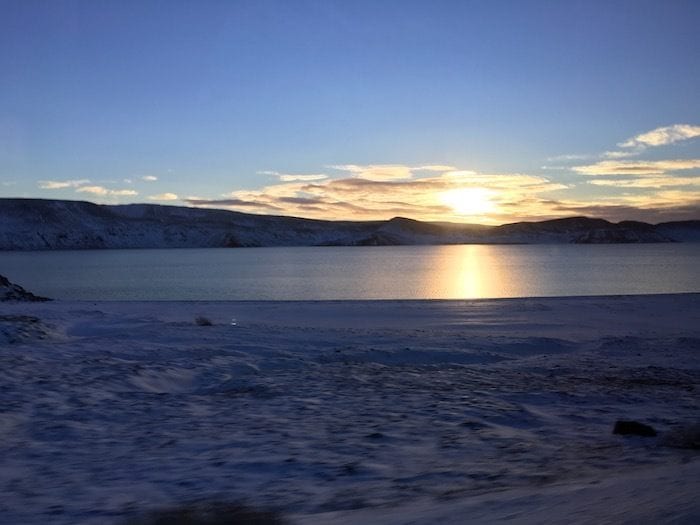
If you are visiting the Blue Lagoon geothermal spa from the airport, you can swing by the Seltun geothermal area and Lake Kleifarvatn afterward. However, if you are starting from Reykjavik, stop at the Seltun geothermal area after your Lava Tunnel tour.
Kleifarvatn Lake is one of the deepest lakes in Iceland and the largest on the Reykjanes peninsula. It is a beautiful spot to photograph because of the volcanic landscape and lava fields surrounding the lake. There is even a belief that a “Loch Ness Monster-like” giant worm and a medium-sized whale live in the lake.
Just down the street, you will find the Seltún Geothermal area. This area features mud pots and hot springs that are easily accessible from the parking lot along a boardwalk. When I visited in the winter this area was snow-covered and I didn’t get to see the beautiful colors that this geothermal area is famous for.
Grindavík
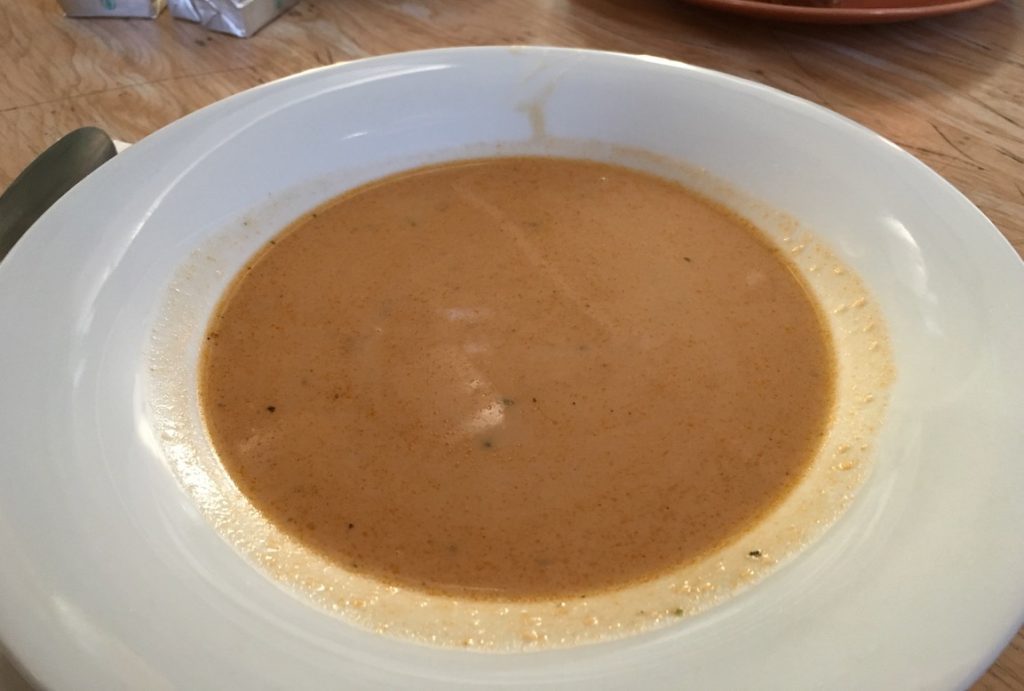
It makes sense based on location to visit the Blue Lagoon next. However, I still think it is nice to end the day with a relaxing soak after a day full of exploring and hiking. This way you also don’t need to rush your time. However, when you visit is up to you. You can also visit the Blue Lagoon on your arrival or departure day and save your Reykjanes Peninsula itinerary for its own day.
Whether you visit the Blue Lagoon or not, Grindavík is a cute fishing town near the Blue Lagoon. In this small town, you can find hiking trails, swimming facilities, and even one of Iceland’s best golf courses.
This is also a good stop for lunch. In Grindavík fishing village you will find several good restaurants. Grindavik suffered some damage due to recent eruptions but the town has reopened in October 2024.
While in Grindavík, also stop by the Brimketill naturally carved pool in the lava on the shore edge west of town. You can take a small set of stairs from the parking lot down to a viewing platform. Just beware that waves can almost reach the parking lot so the stairs can get slippery and you can get soaked.
Gunnuhver / Gudrun’s Geysir
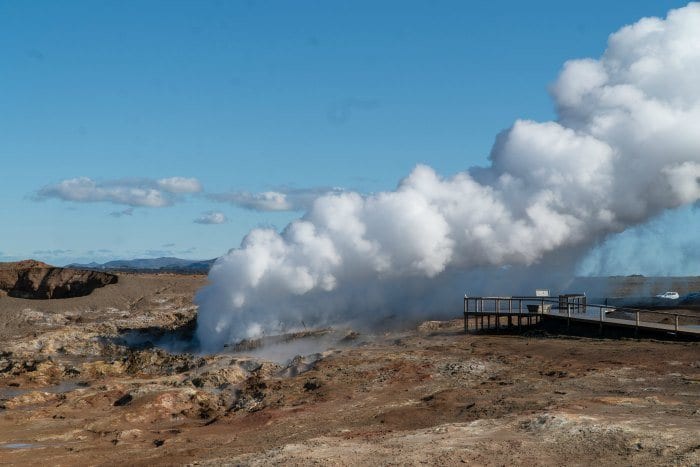
This geothermal area features bubbling mud pools and steaming fissures. The largest feature is the Gunnuhver mud pot. Legend has it that this was named for a ghost who attacked people and shook the houses, which a local reverend was able to get rid of by forcing her into the mud pot.
When I visited the first time, this area was active but not nearly to the extent that it is today. Today, Gunnuhver shoots high into the air and the spray blows across the viewing platform, so take care with your camera and wear a raincoat. If you visit in the winter, also watch out for ice on the boardwalks because of the spray.
There are two different parking lots and walking paths to access Gunnuhver. Expect to spend around 15 minutes taking in this area. From there, you can choose to walk over to the Reykjanes Lighthouse.
Reykjanes Lighthouse / Reykjanesviti
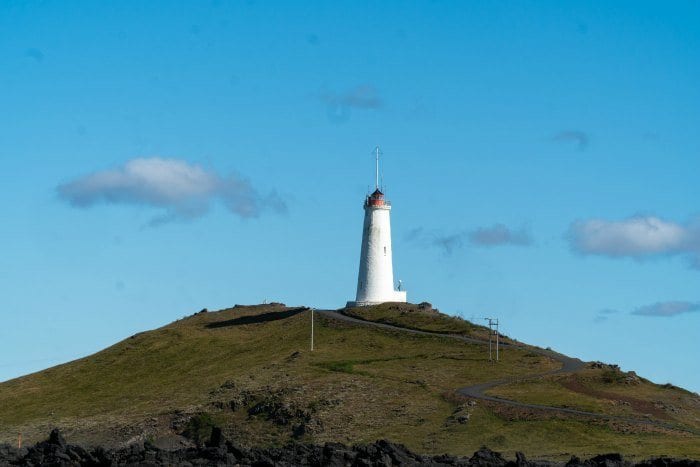
The first lighthouse built in Iceland was erected here in 1778. However, it collapsed a few years later due to earthquakes. The present lighthouse was constructed in the early 1900s and stands approximately 69 meters above sea level and is 26 meters high. You can’t climb this lighthouse, but you can walk up the hill to the lighthouse and enjoy the view from there.
Valahnúkamöl / Eldey
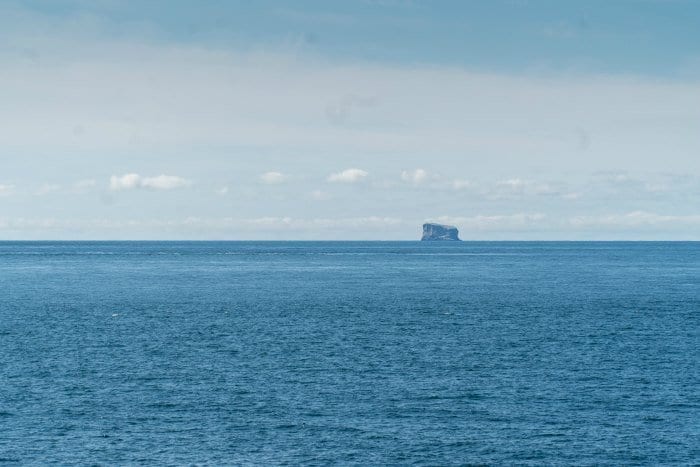
A short drive past the Reykjanes Lighthouse will bring you to the Valahnúkamöl. This mountain was formed from a volcanic eruption. This rugged, yet scenic spot is also a good chance to learn about the dividing line between the two continents and how it travels from the sea and cuts through Iceland.
If you have time, you can climb the cliffs, but it is worth at least taking a walk along this coastline. The jagged rocks jutting from the water give evidence of the area’s turbulent formation.
In the distance, you can see Edley Island. This 77-meter-high rock protrudes out of the sea about 15 kilometers south of the Peninsula. You will need a good lens or binoculars to see it clearly, but today the island is home to the largest Gannet colonies in the world.
The Great Auk, a now-extinct bird species, had also made its home on a skerry near Eldey. The skerry sank into the sea following volcanic activity in 1830 and the last Great Auk was killed in 1844 for a Danish natural history collector – which is more than ironic. Today you can see a sculpture of a Great Auk from artist Todd McGrain from his “Lost Bird Project” on the shore below Valahnúkur.
Plan on spending at least an hour exploring the coastline and the cliffs.
Bridge Between Two Continents
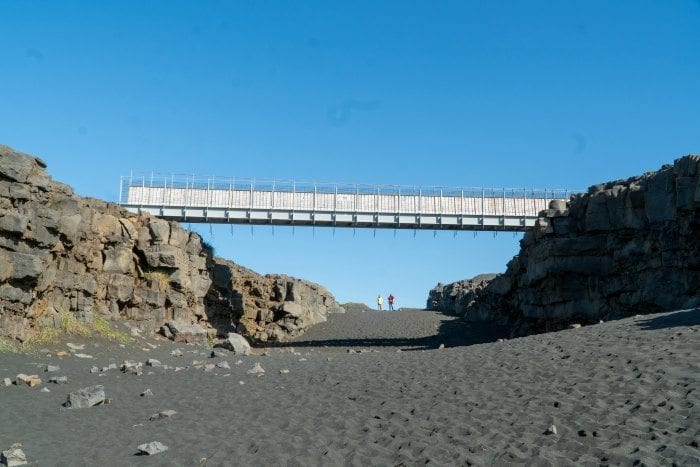
The Eurasian and North American plates are moving apart at about a rate of two centimeters per year. On the Reykjanes Peninsula, you can walk across the “Leif the Lucky” bridge, named after Icelandic explorer Leif Erikson. This Bridge between the Continents connects these two plates.
Here you can cross the 60-foot-long bridge or walk through the sandy soil of the Alfagja rift valley between two continents. It isn’t a lot to look at but the concept of standing between continents is intriguing, hence why people also like to snorkel or dive between the continents in Thingvellir National Park.
Hvalsneskirkja Sandgerdi
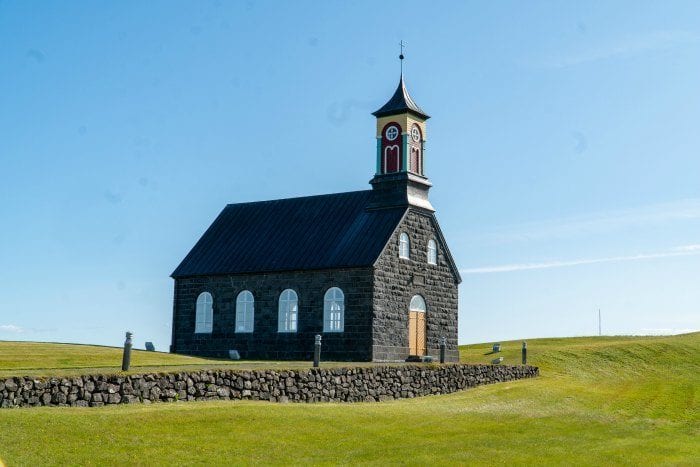
Sandgerði is a fishing community on the northern tip of the peninsula. You will find many holiday houses and a pretty stretch of coastline. If you enjoy checking out some of Iceland’s scenic churches, then be sure to make a stop at Hvalsneskirkja (FYI – kirkja means church in Icelandic.) This black stone church was built in 1885-1887.
Today you can visit the church and well-maintained cemetery, but the church may or may not be open to visitors without an appointment.
Gardur / Gardskagi
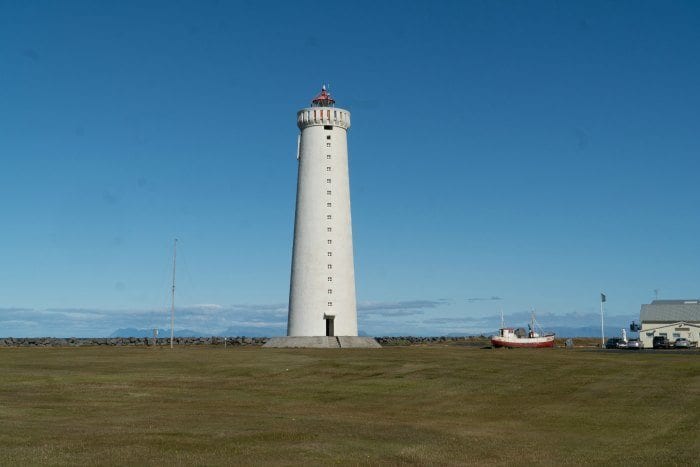
Gardur, which means garden or yard, was named after the earthen walls that once indicated boundaries between local properties. Today it is perhaps most well-known for being the hometown of the lead singer for Of Monsters and Men.
You can also visit the Gardur Peninsula Historical Museum and see the Gardskagi Lighthouse. The Gardskagi Lighthouse was built in 1944 and is the tallest lighthouse in Iceland. You can purchase a ticket in the heritage and maritime museum next door and climb to the top to take in the view from the balcony. It is also home to two shows about the Northern Lights and Icelandic Whales.
You can also visit the Old Gardskagi Lighthouse, which is now home to a cute café and coffee shop. If you make a purchase, you can climb up the ladders to the top of this lighthouse as well and get a nice perspective of the coast and the taller lighthouse.
Icelandic Museum of Rock and Roll
If you have a little more time on the Reykjanes Peninsula before catching a plane or heading back to Reykjavik, check out the Icelandic Museum of Rock and Roll in Keflavik near the airport.
The museum covers the story of rock and pop music in Iceland from 1930 to the present. Guests receive a tablet and headphones to learn and hear more about each of the artists, including Sigtryggur Baldursson (the drummer of Sugarcubes), Björk, Sigur Rós, Of Monsters and Men, and Hljómar. The museum also has a sound lab where visitors can try out an electric drum kit, guitar,bass guitars, and keyboards.
Viking World Museum
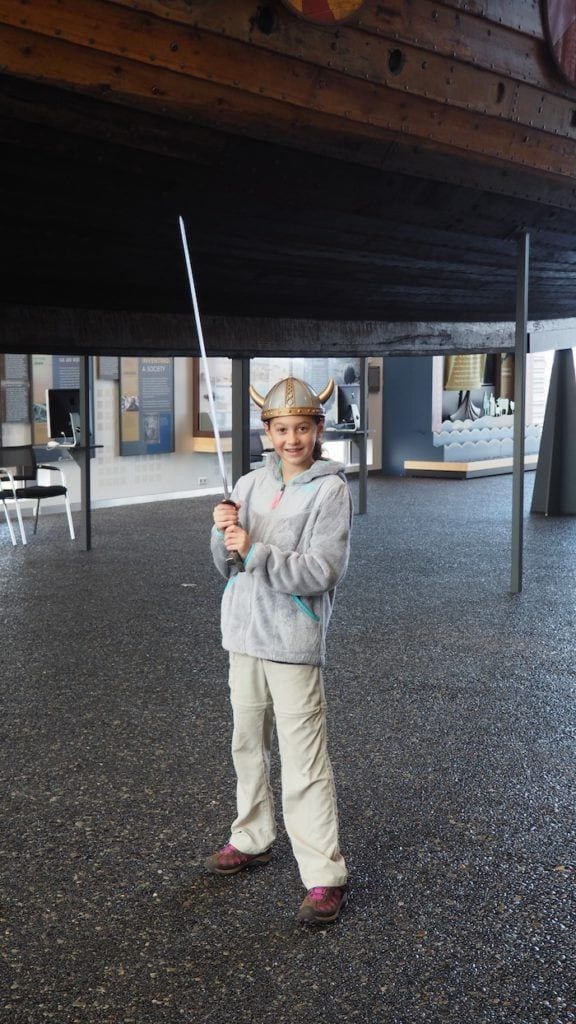
If Icelandic music isn’t your jam, maybe Vikings are. Families especially will enjoy the Viking World Museum. Here you will find a full-size replica Viking ship (that actually sailed to America) and exhibits about Nordic mythology. Kids especially will enjoy dressing up as a Viking and looking at the animals outside.
We enjoyed this museum much more than the Saga Museum in Reykjavik. I would mark it as a must do if you are traveling with kids or you have a particular interest in Vikings, exploration, or Nordic mythology.
Blue Lagoon
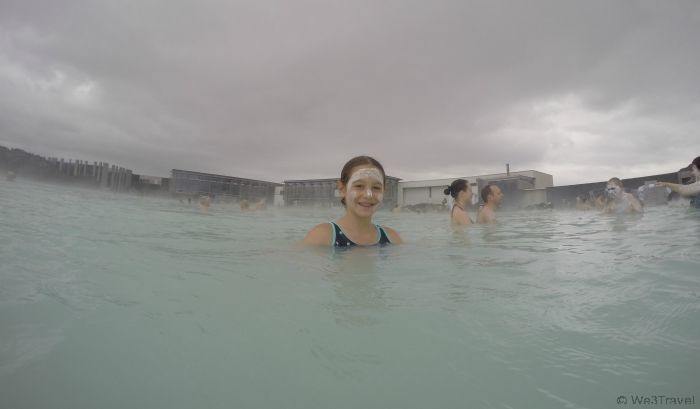
I’ve spelled out all my reasons why I didn’t love the Blue Lagoon, but I understand that for many a trip to Iceland isn’t complete without a dip in the famous milky blue waters of the Blue Lagoon. It would be a great way to end the day of exploring the Reykjanes Peninsula. Just be prepared for crowds, a hefty price tag, and a commercial environment.
You can visit the Blue Lagoon and explore the Reykjanes Peninsula all in one day since I would usually recommend budgeting two-to-three hours at the Blue Lagoon. However, it may make sense to split them up. For example, visit the Blue Lagoon when you arrive in Iceland and you are tired and jet-lagged to kill time before you can check into your accommodations. Then, explore more of the Reykjanes Peninsula before flying out on your departure day.
Map of Reykjanes Peninsula and Points of Interest
Map source: Google My Maps
Reykjanes Peninsula 1-Day Itinerary
As I’ve outlined above, it is easy to visit the Reykjanes Peninsula in one day trip from Reykjavik. Depending on your interests, I would leave Reykjavik around 8 am and plan to return in the evening. If you are self-driving, it helps to have a 4 wheel drive car to navigate some of smaller, gravel roads and parking lots on Reykjanes, which may have large potholes, but the main roads are easily navigated, as are most of the main roads in Iceland. Following are the attractions in the order they should be visited according to this itinerary. I’ve included approximate time spent at each stop, not including travel time between attractions.
- Raufarhólshellir Lava Tunnel (1 hour)
- Seltun Geothermal area (30 minutes)
- Grindavik (1 hour for lunch)
- Gunnuhver geothermal area and Reykjanes lighthouse (45 minutes)
- Valahnúkamöl cliffs and coast (1 hour)
- Bridge Between Two Continents (30 minutes)
- Hvalsneskirkja (church) (15 minutes)
- Gardur Lighthouse (45 minutes)
- Icelandic Museum of Rock and Roll or Viking World Museum (choose 1 — 1-2 hours)
- Blue Lagoon (2-3 hours, plan on having dinner here before returning to Reykjavik)
Where to Stay on the Reykjanes Peninsula
There are a number of small hotels on the Reykjanes Peninsula, as well as a number of chain hotels near the airport. I would recommend Hotel Berg, which also has a rooftop hot tub and provides free airport transportation.
More Iceland Travel Tips
- Itineraries: 5 Days in Iceland’s South Coast, 4 Days in the West Fjords
- Packing: Iceland summer packing list, Iceland winter packing list
- Budget: How much does a trip to Iceland cost?
- Day trips: 7 Essential day trips from Reykjavik, Snaefellsnes Peninsula day trip
- Travel tips: 25 Iceland travel tips, Tips for visiting Iceland in the winter
- Tours: Glacier hiking in Iceland, Glacier lagoon boat tour, Where to find puffins in Iceland
- Food: Where to eat in Reykjavik
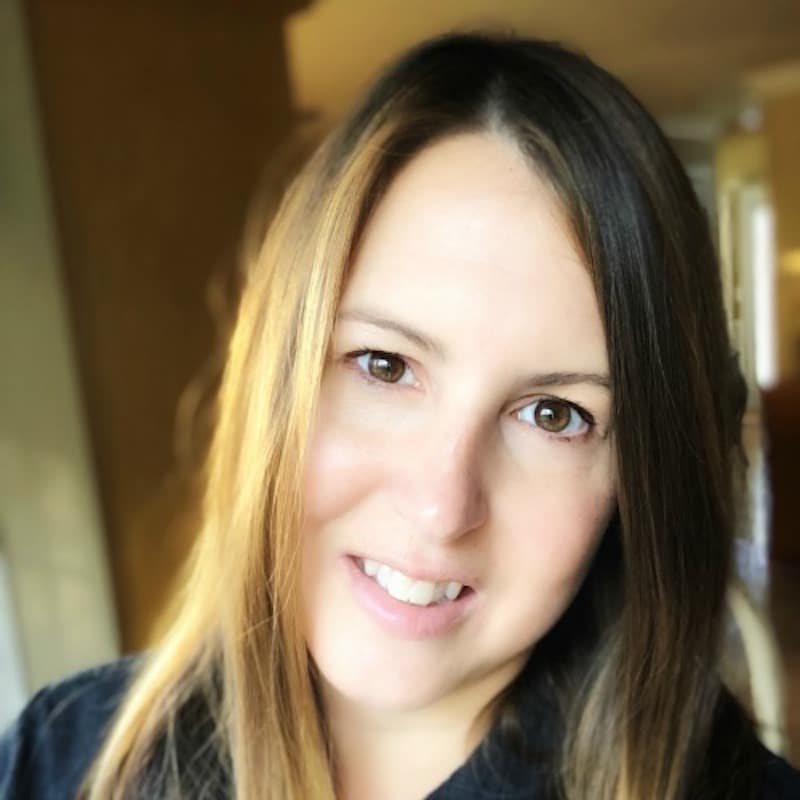
Tamara Gruber is the Founder and Publisher of We3Travel. A former marketing executive and travel advisor, Tamara is an award-winning travel writer and recognized expert in family travel. Tamara is a member of SATW, NATJA, IFWTWA, and the Adventure Travel Trade Association, and serves on the Board of the Family Travel Association. She is also the publisher of YourTimetoFly.com and the co-host of the Vacation Mavens travel podcast.


